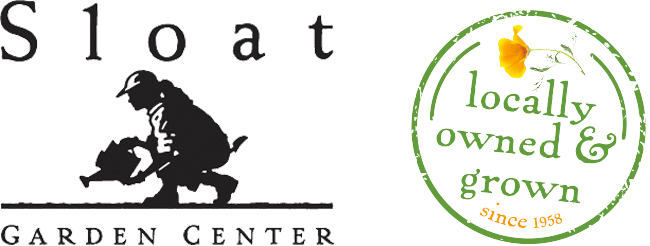 Agastache (pronounced ah-gas-TAH-kee-whew!)
Agastache (pronounced ah-gas-TAH-kee-whew!)
This perennial herb (also Sloat’s plant pick of the month) is also called “Hummingbird Mint” or “Anise Hyssop”, the flower spikes not only attract hummingbirds but butterflies and bees too. The name ‘agan’ means very much, the ‘stache’ comes from ‘stachys’, meaning spikes. They have an upright growth habit with stiff angular stems, different species grow between 1 ½ feet to 4 feet tall. They are native to the southwestern US and northern Mexico. They need only moderate water once they’re established, after their second growing season. Agastache likes full sun and excellent drainage. You can also mulch around them with a fine gravel, the gravel will release a little extra heat at night for these sun-lovers.
All species are highly aromatic; some smell like anise or root beer, some like are sweet with a hint of lavender and some smell like bubblegum!
It makes a wonderful addition to the perennial border, blooming summer through fall, and will re-bloom is dead-headed. They bring a delicate texture that contrasts well with bold textures like sedum ‘Autumn Joy”, pennisetum rubrum, big dahlias, campanula medium, amaranth, Shasta daisies, Echinacea, euphorbias, salvia ‘East Friesland’, hemerocallis ‘Stella ‘Doro’ or ‘Green Flutter’. Blooms can be red, orange, pink, purple, or blue-ish.
They are hardy if you leave the stems on over winter to absorb any frost damage. In mid-spring cut the dead stems off to about 4”-5” above ground level. Fertilize half strength with Maxsea All-Purpose in the spring.
In the fall fertilize with EB Stone’s all Purpose Organic Food. Divide these plants in the fall.
Aeonium
These succulent subtropical perennials are native to the Canary Islands. Some are also found in Madeira, Morocco and eastern Africa. They will take full sun on the coast, but light shade is preferable in the hottest areas in the Bay Area. Aeoniums do well in containers, in the landscape they need excellent drainage. That’s why they do so well in the sandy soil of the Sunset or the Richmond of San Francisco. In clay soil they may do better in a raised bed.
The fleshy leaves are held in rosettes at the branch tips although there are some low-growing forms that don’t seem to have any branches. After several years the rosettes produce a single flower stalk in spring or summer. Branches that have flowered die, but more branches can grow. Older plants can become leggy. To encourage branching, cut back branches several inches below the rosettes. Cuttings are easily rooted; let dry for a few days, then plant in sandy soil kept barely moist until new growth appears.
They are NOT hardy, meaning they need protection from frost. Containers can be moved under eaves, plants in the ground should be watered the day before the temperature drops and covered with Harvest Guard, our insulating cover/seed blanket.
They are available in greens and bronzes, with red edges and white/red/salmon variegations. They would look fabulous planted with blue oat grass, other succulents, miscanthus, phormiums, achilleas, anigozanthos, and leucadendrons.


